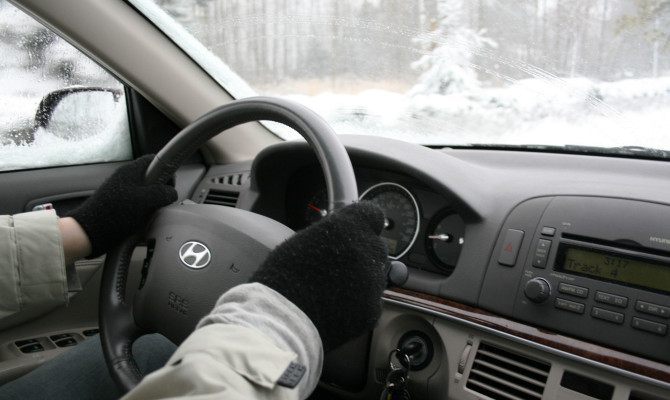Driving can be challenging no matter where you live in the province at this time of the year. The heavy rain, fog, wind or slushy snow that’s common in coastal areas can present an unpredictable and more dangerous driving situation than sub-zero, crunchy hard-packed snow…
Winter weather has already touched most parts of BC, and there is a threat of more severe snowstorms in the coming days.
Driving can be challenging no matter where you live in the province at this time of the year. The heavy rain, fog, wind or slushy snow that’s common in coastal areas can present an unpredictable and more dangerous driving situation than sub-zero, crunchy hard-packed snow. Then there’s the biggest driving challenge of them all – ice in its various road surface incarnations.
What makes a BC winter road trip uniquely challenging (and interesting) is that it’s possible to experience all (or most) of the above conditions, in a same-day drive.
Even if daytime temperatures are mild, overnight temperatures typically drop close to or below the freezing mark on a regular basis.
Your car’s tires are what keep you on the road and out of the ditch. Before you set out today be it to work or to pay a visit to a friends or family across the province, please check your tires.
Below seven degrees Celsius, the rubber compound used in a winter tire (or all-weather tire) remains softer and offer better traction qualities than an all-season or summer tire.

A winter or all-weather tire is marked with a mountain/snowflake symbol on the sidewall to indicate that it meets a specific winter tire industry performance test. A series of tragic accidents, which involved vehicles equipped with all-season tires, mainly on the Sea-to-Sky Highway in BC, played a significant role in the adaptation of this tire designation.
The traction qualities of a winter tire will deteriorate as it wears and looses tread depth. As a general rule, a half-worn winter tire performs at about the same level as a good all-season tire in cold, slippery conditions. A half worn all-season tire will perform about the same as a good summer tire. And a half-worn summer tire… well, let’s not go there!
When road traction conditions are poor, try to avoid asking tires to do more than one job at a time – specifically steer and brake at the same time. Start braking sooner and try to get all braking done while the vehicle is in a straight line, in advance of a turn. Steady and smooth steering actions work best and use a gentle push on the gas pedal as you exit the turn.
According to ICBC, about one-in-25 crashes in BC are caused by wildlife collisions. Although they tend to be more active in spring and fall, they can be attracted by roadside vegetation and you need to be extra watchful for wildlife during the dusk and dawn.
Contact: bob [dot] mchugh [at] drivewaybc [dot] ca
**********
Top Ten Winter Road Trip Tips from Bob McHugh
1. A full night’s sleep ahead of long drive is important.
2. It’s also a good idea to let a friend know where you’re leaving and the time you expect to arrive.
3. Fill the windshield washer bottle with seasonal cleaner and carry an extra container in the trunk.
4. Don’t forget to bring sunglasses – glare from snow can be hard on eyes.
5. Wear (warm) clothes that allow good movement to steer and operate the foot pedals.
6. Bring water plus non-perishable food supplies on longer trips.
7. An emergency (first aid) kit.
8. Check the weather forecast, road conditions and for road closures on your route, before heading out on a long trip.
9. Good winter tires are mandatory on most high elevation BC highway routes during the winter.
10. If you must drive in bad weather, it’s a good idea to refuel when the tank drops below half full. If the car breaks down or gets stuck in a snow, having engine heat until help arrives could be important.
Useful winter driving web sites: www.drivebc.ca / www.icbc.com
Recent Comments
- { Enjoyed your Forest of Bowland in the BMW X5M, particularly the photo of the BMW in front of the main part of Stonyhurst College where... }
- { Bantam designed the Jeep, not Willy's or Ford. The American military gave the original Bantam prototype to Willys and Ford to copy. There is plenty... }
- { All Escalades come with a 6.2-lilter V8 engine that produces 420 horsepower. A six-speed automatic is the only transmission offered and drives the rear wheels.... }
- { Alexandra is an excellent journalist. }
Popular Posts
- Journey to a ‘Sparkling’ Luxury Okanagan Resort “Four lucky readers will put a Dodge Journey’s weekend-...
- The Need For Speed: Hike Those Highway Limits More than half of those polled believe the province sho...
- Drives-U-Crazy… Erratic drivers. An early morning drive from Kelowna to Vancouver is nor...
- Readers Respond: The Pros and Cons of Increasing B.C. Speed Limits Increasing the speed limits will only increase risk to...
- Honda CR-V Review: The Compact Crossover To Get Things Done The CRV is a very stylish and aerodynamic crossover veh...











